I first met Arnhem-based fashion designer Sjaak Hullekes in July of 2013 at the Modefabriek fashion fair, when his eponymous menswear label exhibited on a platform curated by the Dutch Fashion Foundation to showcase outstanding Dutch designers. This past March, Sjaak debuted his new label Hul le Kes at Amsterdam Fashion Week (AFW). At this recent edition of AFW Sjaak was on the panel for two events, where he spoke about designing with intention and the resulting sustainability of this work. I had the opportunity to attend one of these talks and later met with Sjaak virtually.
With Hul le Kes, every single piece of clothing is imbued with meaning. Each piece comes with a label and passport bearing an insignia with the motto: A Garment To Dress Your Soul. The passport states the name of the garment, its fiber contents, and when it was completed. The journey or story continues with the owner, who is free to add photos or text to the pages.
Here, Sjaak shares the message and mission behind the beautifully distilled and designed Hul le Kes (which is entirely created using antique and vintage fabrics), as well as his current concerns about the industry, young designers, and the greater society.
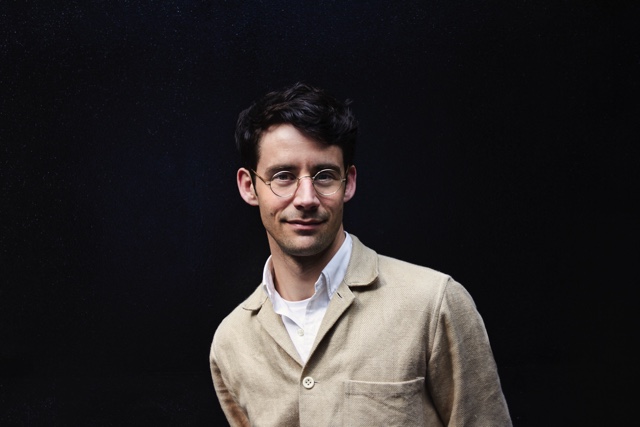
Can you tell me about the journey up until this moment—shortly after presenting your new label at AFW?
We had another brand before (Sjaak Hullekes) with suits, ties, that kind of stuff, two shops, and several points of sale worldwide. But it didn’t stand close to me so we ended it at a time when it wasn’t really necessary or going on to have a real big signature. It was the end of the recession and everyone was asking for white, grey, and black clothes. So we said, ‘Let’s end it and just see what happens.’
We stood still as a designer for a period and started Studio RYN, a production company that produces small quantities for young designers. Then the designers have the opportunity to deliver for just one shop, for example. This was what we really needed when we were young and started our first brand. We have a lot of knowledge because we always did the production ourselves or if we did it abroad, we oversaw it ourselves; we never worked with agents.
I found my love for creating garments again. At that point we said, ‘Okay, we want to create something new, but then it should be authentic’—or really my own. As a child I always went to flea markets and auction houses. I have a real love for old materials. We looked in my closet to identify the typical garments I always use. We put those ingredients together and just created some items wherein this could be Sjaak or this could be the brand. We were so enthusiastic about those first samples that we had to create a full look—and that’s how Hul le Kes started.
When you say ‘we,’ who is also involved?
My partner Sebastiaan Kramer, first of all. He does the business side: the strategic part and the logistics. Besides Sebastiaan, our team consists of an office manager—for all administration—and three people coordinating production and assisting in design. We collaborate as a dynamic team and our tasks change constantly.
I find it telling that when you design for Hul le Kes, you say, ‘This is so me and it could also be for the label.’
It’s very strange to do interviews and promote a brand that isn’t really your signature. We freelance a lot for brands and of course we always work in another vision [for them]. But I wanted to create something more personal because I want to work with this for at least three years. So why should I follow the hype? Maybe commercially speaking it’s clever but then it’s not long-lasting.



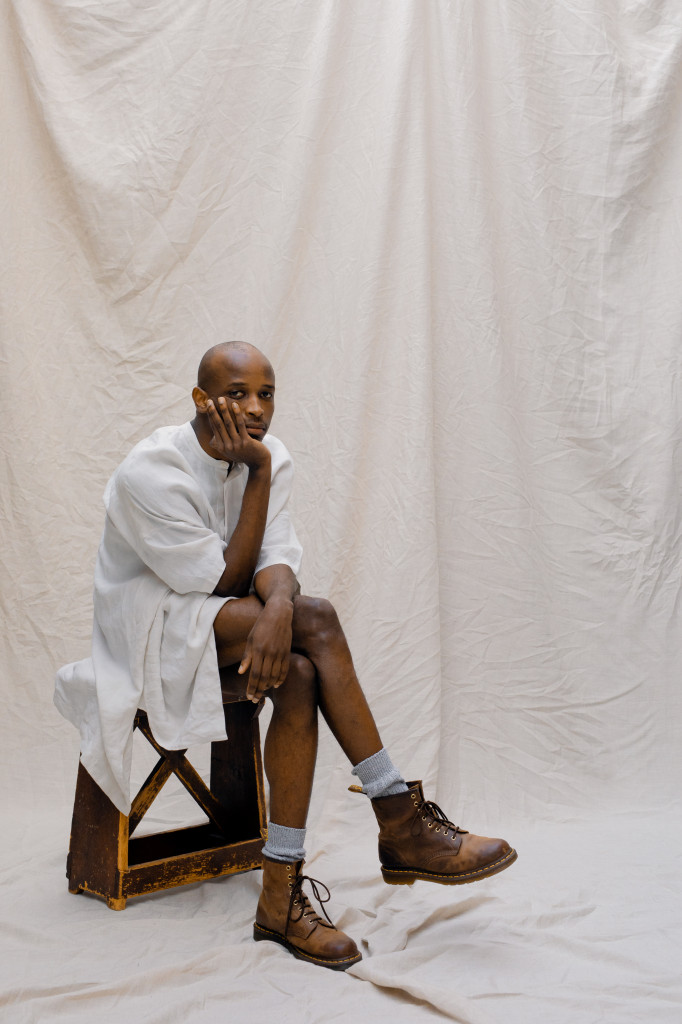
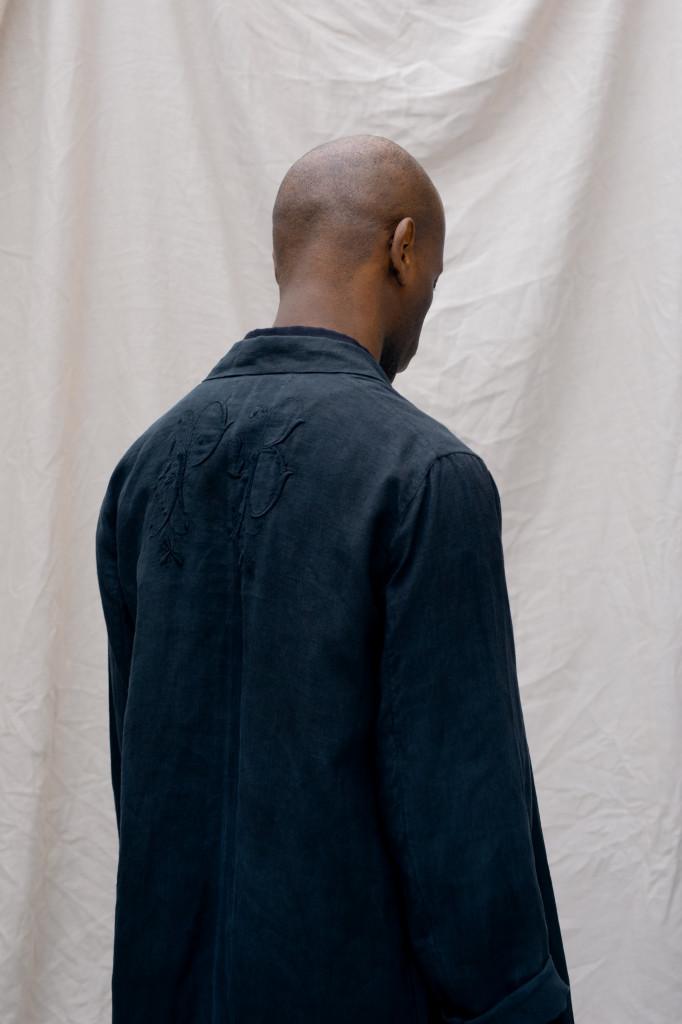


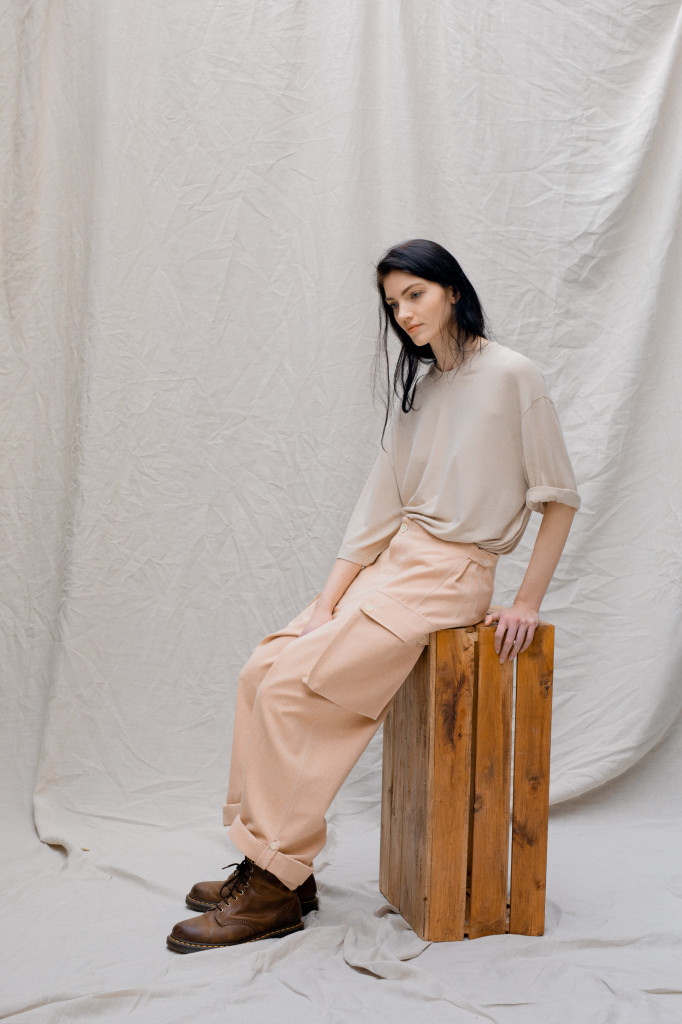
Hul le Kes Looks © Boris Lutters
Then you have lots of experience working in other ways with your previous label, which I imagine followed the schedule of seasons.
Yes we did; we stood in Milan and Paris every season—that cliché.
Then you’ve done that schedule for yourself and you’ve been consulting but now this is completely your own way of working.
And I must say that I struggle a bit with how I am going to do my sales. I know there are countries and shops that really understand the brand and it’s nice to have followers but the wholesale and the real price—it’s such a hole. It isn’t a truly fair price to present the clothing that low and then [retailers] have the 2.6 or 2.7 (160%, 170%) markup on it.
I’m also not fond of the sale period. It’s really odd that we create something that has its price (because that is its value) and then say, ‘Let’s do 50% or 70% off because I have to pay the rent.’ For [every other] designer, if you design a really nice lamp or chair it can be your evergreen. You can have credits for ten years. I have credits for ten weeks—that’s weird.
Hopefully there are retailers that will do more collecting. So maybe it’s just one piece from a brand (instead of three racks) but then you go to that store because you feel a connection with their style. Style is a long-lasting thing. Of course it changes but it’s not changing as quickly as fashion is working right now, with seasons and ten deliveries a year.
I suppose that’s the difference between fashion trends and style.
But it’s scary to follow a style and it’s very expensive to create a brand. We must say all together that we have to take it a bit slower and find other solutions. Fashion is really old-fashioned in its structure and how it works. I think how you create your community is much more important than how you create your money because it is a group thing, you cannot do it by yourself. So that’s more of what I’m looking for.
Creating community and a story. How did you come up with the idea for a passport for each item?
Hopefully people are becoming more aware of what they wear and when they wear it. Every time someone takes a picture and shares it with family and friends, there is always a story with that picture. It can be that way with a garment as well.
Now that we are doing a full circle in that you can send [the garment] back, I can share those stories with the people who are wearing it and give it through to another customer. I think that’s lovely. Hopefully it’s not coming back and also, hopefully it is. If it’s not then I’ve got a happy customer and if it’s happening I can create a new life for it. Let’s see.

All the fabric is sourced personally, and you mentioned that you grew up going to flea markets…
I’m challenging myself more maybe, to first find the ingredient and then react in the design of it. But I think that’s very normal. For example, if you’re a good cook and a local you find ingredients that you can work with—whatever is in season or in the area—and create something nice with that. It’s very normal that we do that. So [in fashion] why do we ship something from China to here because it’s ten cents cheaper, why do we say, ‘I only want that design in black, red, and blue’ and then someone makes it for us? There is too much of everything. So just collect first and then play with it.
The challenge is that everything in the brand is found—even the hangtag, the label, everything we create ourselves. I think that creates the touch and feel of the brand but hopefully it also makes people aware of the amount of stuff that we have, and that we can reuse things.
That’s amazing that everything is found or preexisting. Is this your first time working with these special parameters?
Well, I never buy something new for myself; I never did. For example, the glasses that I have on right now are from a flea market. I paid six euros for them. Everything I buy is second-hand. You can find a treasure. I think it’s really lazy to be like, ‘Okay I can afford this, this brand is my identity’ and just go to the store, swipe your credit card, and it’s yours. I like the feeling of being on a hunt: really looking for something and then finding it. The things that I buy are more me because they’re not really on trend or something. It’s just something I like, and some things I’ve already had for 20 years. They’re still working, so why not?
Hul le Kes is then super personal: it goes through your own practices, your own aesthetics, and you select every piece of fabric yourself.
And also the placement, because we find a lot of old blankets that have a family monogram. Each design has a different feel. Sometimes [the monogram] is on the chest, sometimes on the back—it’s really playful to do it like that. Because we create everything ourselves, we can do it. And you buy something unique, which is nice.
When you create the pieces, are you thinking about something that reflects the present?
Yes, of course. Fashion is always about creating something that is in that moment. I’m not going to make historical stuff and I don’t like that kind of future feeling. The things I make now are a bit boxy. I like short things and wide things and I can’t imagine creating a different silhouette or shape in the future. But it’s minimal. I’m not going to do that Off-White stuff with brands and tapes. There are already 100 brands like that at the moment. It’s a bit lazy because you’re looking at money, not at identity. I don’t think brands without a real identity are going to make it. Maybe for a period, but you’re always leaning on another brand.
You were on a trajectory where you could have followed the money. You chose to step away from that. Was there a certain moment that triggered that?
Yes, we had the opportunity—investors found us and said, ‘Let’s do a franchise.’ They wanted to open several stores. It ended there for me: to play with big money and big amounts. No, that was not my thing.

Did you go straight into having your own label after school or did you work for other designers?
We’ve always worked for other brands like Puma, Tommy Hilfiger, and Hackett. We did very commercial stuff because a lot of brands have their offices in Holland. We had really good designers as teachers when we were at Arnhem (ArtEZ University of the Arts, Arnhem) so we had that connection. Of course it’s nice for the income and to know how it can also go. With that money, we just invested in the brand. The first years we only went to Paris, we sold to two shops in Holland and that was fine because it isn’t that exciting here for men’s wear.
At first, we were more successful abroad. Then we won a nice prize, the Dutch Fashion Award and then it was time to show what we did in Holland as well. So we opened the first shop in Arnheim. The second shop was in The Hague on a really nice street, the Denneweg. It’s an antique street, and I always go there. There is also one in Antwerp. Those streets are always filled. I said, ‘I have to put my clothing there because people aren’t walking that quickly through that street and they are already collectors.’
It’s a kind of foreshadowing for your collection Hul le Kes. How did you come up with the idea to use your last name and break it up in this way?
It has an international feel and if I have to pronounce it the good way, I always cut it. So if I say it internationally, I say Hul/le/kes and then people pronounce it well. So why not do it now? And it’s saying nothing and it’s saying something. I like how it looks on the label. I’m happy with it.
For your AFW presentation, you showed the clothing on people of all genders. How did you decide to make your pieces gender neutral or unisex?
I didn’t really, I must say. The funny thing is that I always get the reaction: ‘Your colors can be a bit feminine’ or could be for women as well. With the last brand it was even more so than now; many women wore it. I’m a men’s wear designer but I think a lot of the pieces could work on a female really well too. It’s not unisex per se, because it has a man’s closure and some lengths are not correct for ladies but play with it!
Going back to community and not creating things along or in a bubble, you’ve been mentoring young designers—specifically in sustainable fashion. What’s your perspective on what the next generation of designers is doing? Has it evolved from how you approach sustainability?
Sustainability is quite scary for me, I must say. (It’s a catchword.) It’s low hanging fruit at the moment. You can make really ugly stuff and it sells well because it’s sustainable. People look more at that than at the brand itself. So we get a lot of people here that are starting a collection that is just tee shirts with something on it, and it’s organic or so on. It’s different if a commercial person is starting a brand or if a designer is starting a brand.
I think designers now are very authentic; they’re really close to themselves. They do an outspoken piece or else they’re standing in the shadow. That’s what I see at the moment. I miss the clean minimal kind of signature—it’s sort of disappeared. Designers now are into the freak shows, the club kids, and the big outspoken pieces. Maybe it’s the period; maybe they want to stand out.
This younger generation has only grown up with programs like The Voice, where you can only be special if you do something special on this platform or on the spot. Do your thing; stand on the spot. If you go to a children’s class and ask them what they’re going to be, they’re all going to be singers or actors. No one says, ‘I’m going to start a bakery,’ ‘I’m going to deliver the mail,’ or something basic like that. For me, that’s a bit scary.
Everyone who does something creative wants to be the best and they want to have the director’s seat within a year. They are in a rush. Hopefully they’re not going to be disappointed when they get to 30. They see the world as their background or playground. The world is too big; you can’t get there. You can get there if you’ve got the money. But if you don’t have that and if you don’t have the network, you’re not going to be found. No, I think that’s naïve.

This connects to what you said earlier, that people have to be as outrageous or individual as possible in their design work. But it also seems that this is the antithesis or opposite of slowing down and being very conscious of one’s work.
It’s much more selfish. They stand in the spotlight, and not their designs. I always like to stand in the shadow. Let the product speak. Of course that’s something personal. But when I finished my degree I didn’t dare say, ‘I’m a designer.’ I was too young. Now I say I’m a designer but it doesn’t come out of my mouth [easily] because I’m still learning and I’m still young. I’m taking the full period to grow for myself and also for the brand. The younger generation is really in a rush; they don’t take the time to develop.
When you mentor or work with fashion students, is this something you bring to the table?
Yes—and to be humble. People can react strongly if their internship wasn’t right or if they think someone is doing something wrong or ugly. What is ugly? If it’s made with love and the story behind it is so strong, you can’t say something is ugly. You have to find out when it’s made, how it’s made, who made it—and then reconsider it. There are brands that aren’t my taste but if they have a strong community, a very strong identity—then it’s really good.
Then it’s something respectable. We can’t be for everyone’s taste.
Indeed. But don’t react that way. ‘This is mine,’ no—we do it together.
Did you grow up in Arnhem?
No, I grew up in Zeeland (the southern coastal side) on a small island. That’s why I think I like community so much because I always felt the sea around me and I knew all the people that lived there. I grew up in really naïve and silent surroundings.
Then you moved to Arnhem to study and you’ve been there since?
Yes. The good thing about Arnhem is that it’s very small so you can really focus on work. It’s normal that you have to go to another city to show your work. I think if you are a designer in a metropolis you get a bit lazy. You get the signature, attitude, or something from that city and you have to be aware that people think differently in other cities. For me it was normal to go to Milan, Paris, or New York with my stuff and then find out how people react to it.
This makes me think of your childhood on an island.
Yes, you don’t have to be in a big capital to create nice work.
It makes sense that you have this hunter/seeker/traveller leitmotif, particularly with the passport for the clothing as well. It’s a very nice round story with Hul le Kes.
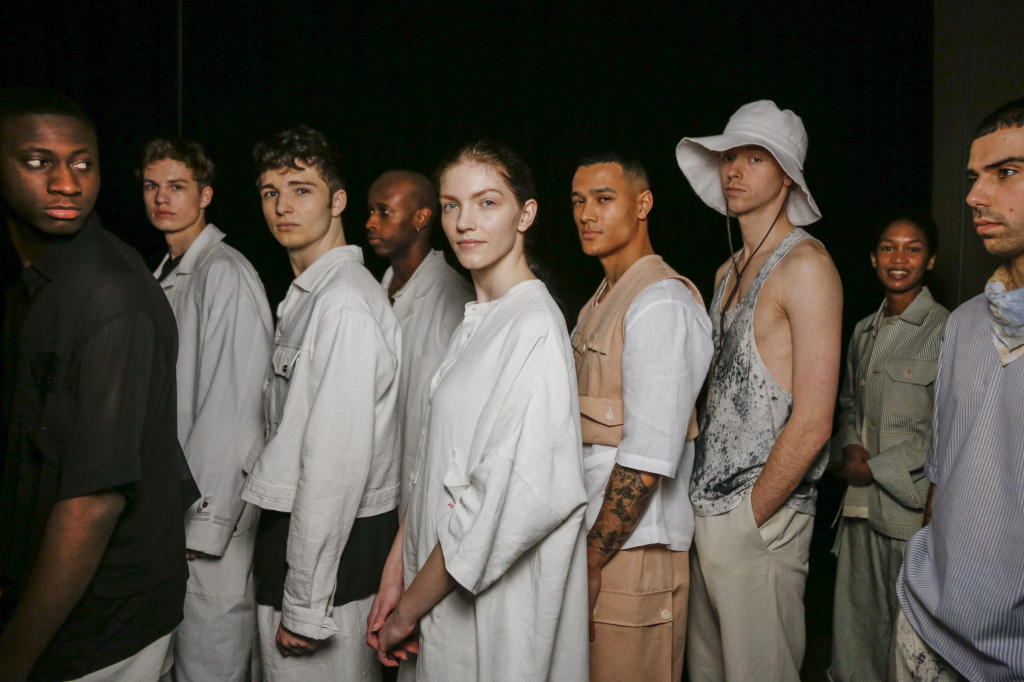


0 thoughts on “Sjaak Hullekes of Hul le Kes: a new kind of fashion”